Mastitis: Dangerous disease of milch animals, do not delay treatment
Can't completely eradicate thrush, but it can be reduced by the precautions of the livestock owners
Mastitis or ‘inflammation of the udder’ is a very common and dangerous disease in cows. The disease attacks are more on foreign cows of hybrid breed giving more milk than indigenous cows. Toenail is a disease that cannot be completely eradicated, but it can be reduced with precautions. The milk of a cow infected with Thanella is not fit for use. That milk turns out to be torn or clot-like or coagulated like curd. It also stinks. The cattle breeders are greatly harmed by Thanella. Milk production falls and so does the burden of treating the animal.
Effect of threshing
The udder causes knots in the udders of cows and they become deformed. There is swelling and stiffness in the udder and there is pain. Cows who are sick with Thanella have high fever and they stop eating and drinking. The infection of thrush enters the body of the cow through the udder tube itself. Even if the udder is injured, the risk of infection of the toenail is greatly increased. Incorrect milking can also damage the udder. Tonella can occur at any age, but its symptoms become severe after delivery.
According to experts from Meerut-based ICAR-Central Institute for Research on Cattle, consumption of bactericidal milk from cows infested with thrush can cause diarrhoea, sore throat, scarlet fever, brucellosis in humans. There may be diseases such as tuberculosis (TB). Antibiotic medicines have to be used a lot for the treatment of toenail, part of which also reaches our body through milk and makes us indifferent to antibiotics.
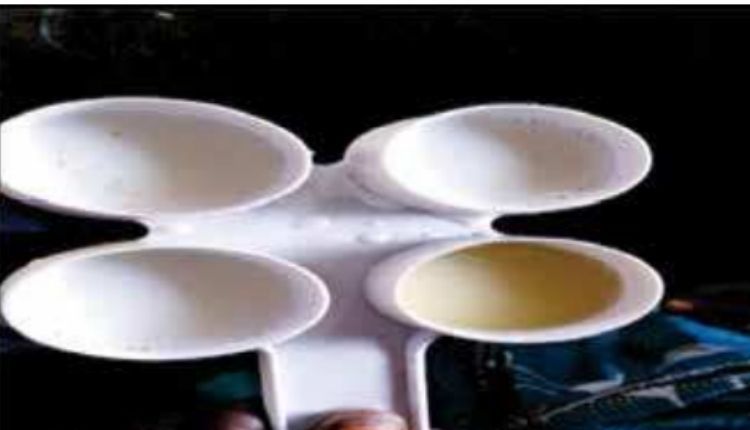
Cause of thrush
Tongue disease is primarily caused by infection with bacteria, but other germs such as viruses, fungi, and mycoplasma can also cause it. Its main bacteria Staphylococcus and Streptococcus are commonly found on the skin of the udder. Whereas Ecoli bacteria live in dung, urine, floor and soil etc. They cause infection of the toenail when the udder is cut from dirt and any injury to the udder. Once thrush grows, its bacteria then spread from the hands of the milker to each other. If the milk dispenser is infected, then it also spreads the disease.
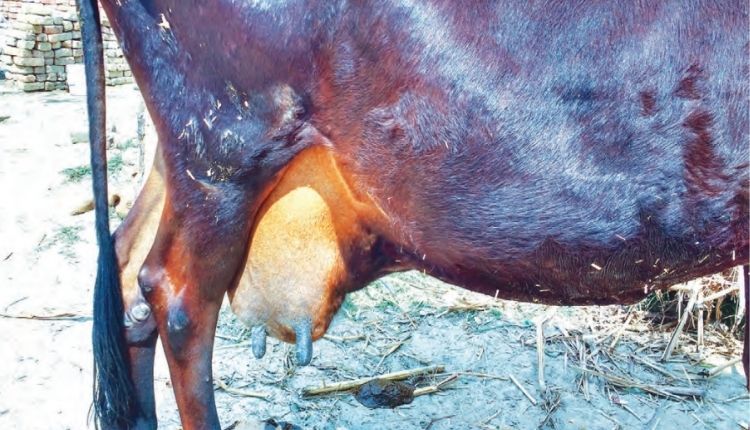
Main symptoms of toenail
Veterinarians have determined four categories of toenail infection based on its intensity, as they have to take special care of it while treating a sick animal.
Hyper: This is a very severe form of thrush. In this, the animal has high fever, they stop eating the fodder. They have trouble breathing. There is severe swelling in their udders and they feel a lot of pain. In this condition, milk mixed with pus or blood comes.
Intense: In this condition there is swelling in the udders and change in the nature of milk. Milk can be watery, pusy, and may also be mixed with blood clots. In this condition one or all of the udders of the animal may be affected.
Sub-intense: This condition is often seen in dairy farms. According to one study, up to 40 percent of milch animals may have this category of muzzles. In this condition the milk production of the animal decreases and the quality of the milk deteriorates. Its infection is confirmed by ‘culture sensitivity test’ of milk.
Chronic: This is the last and fatal stage of the tonsil disease. In this, the udders become very hard. The milk glands in them get destroyed and lifeless tissue takes their place. The udders shrink. Milk becomes very thin, with pus and blood clots.
Diagnosis of tonsil disease
Clinical thrush is easily identified by looking at the symptoms of the disease. For example, swelling of the udders, watery milk coming in or splashing in the milk. But in sub-clinical tonsillar no outward signs of disease are seen. That is why five types of practical tests are done for its identification.
(i) California Mastitis Test (CMT): In this test, mixing equal quantity of milk with CMT reagent makes a thick gel according to the intensity of the duct. This gel is judged by the parameters 0, 1, 2 and 3. The thicker the gel becomes, the greater the severity of the disease.
(ii) Bromothymol blue test (BTB): In this test, each drop of milk from the four udders of the animal is dropped on the BTB card. This changes the colour of the card according to the intensity of the disease. For example, green becomes yellow (+), green (++) and blue (+++). Paper strips of BTB are also easily available in the market for the identification of subclinical mumps. With the help of this, the cattle owners themselves can check the milk of the animal and find out what level of thalli is affected by their animal. But even after doing self-examination, the animal husbandry should treat the sick animal only after taking the opinion of the veterinarian.
(iii) Electro conductivity test : There is an increase in electrical conductivity in the milk of an animal suffering from thrush. The electrical conductivity of milk of a diseased animal with thrush is up to 0.50 ml siemens per centimeter higher than that of a healthy animal. This test can be done only by the special machines of the testing center.
(iv) White slide test : Through this test, it is done to know the increased proportion of white blood cells found in milk. For this test, patients keep 4-5 drops of animal milk on a slide. Add 2 drops of 4% sodium hydroxide to it. Then with the help of a matchstick, keep mixing it for 20-25 seconds. In this test, the more intensely the milk of the animal is infected with thalla, the thicker its gel will become. If the tubercle is old, white flakes appear in the mixture.
(v) Bromo cresol purple test : This test is based on the change in the pH value of milk. In this, 2-3 drops of 0.9 percent Bromo Cresol Purple reagent are mixed in 3 ml of milk. Due to this, the colour of thrush infected milk changes to blue or purple, while the colour of milk of normal or healthy animal remains yellow.
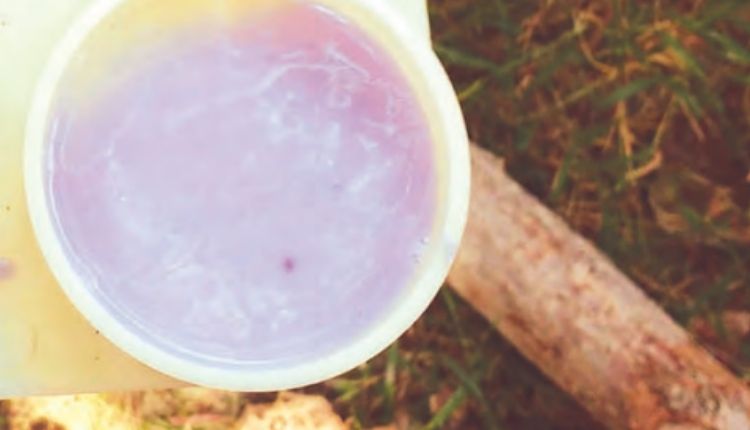
What are the measures to be taken for the treatment of toenail?
There should not be any delay in the treatment of Thanella. As soon as the symptoms are seen, the animal should be shown to a skilled veterinarian immediately. Delay in treatment can not only aggravate the tonsil disease but also become incurable. Once the udder of the animal becomes hard or ‘fibrosis’ develops in them, then its treatment becomes impossible. First of all, separate the diseased animal from the healthy animal as soon as the symptoms of thrush are observed.
If there is a veterinary institute or disease testing laboratory nearby, first of all, take the milk of four udders of the animal separately in a glass vial or test tubes, thoroughly boiled and taken for antibiotic sensitivity test. With this, the appropriate drug is decided for the germ of the disease, so that the treatment is effective, fast and easy.
For the treatment of toenail disease, vaccinations of antibiotics like ampicillin, amoxicillin, enrofloxacin, gentamicin, ceftriaxone and sulfa have to be given in the morning and evening for 3-4 days as per the advice of the veterinarian. Apart from this, vaccines like Meloxicam, Nimesulide etc. should also be administered to reduce swelling of the udders.
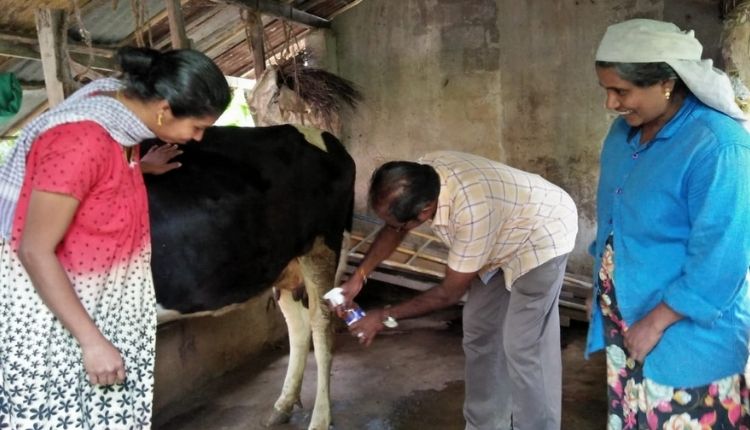
During treatment, first remove milk from healthy udders and keep it separate. Then remove as much milk as possible from the diseased udder. After this, use an intra-mammary tube such as Pandestrin-SA, Tilox, Cobactan, Mamytal etc. for at least three days. The udders should be completely emptied before the intra-mammary tube is placed on the udders. Sub-clinical mumps can be treated by simply inserting a tube into the udder for 2-3 days. The milk of an infected animal should not be used by humans for at least three days after applying the drug. Some herbal medicines are also available in the market for the treatment of sub-clinical tonsillar, but these too should not be used without the advice of a veterinarian.
Many times such a knot is formed in the udder tube of animals suffering from thrush, due to which the secretion of milk stops. In such a situation, complete treatment is not possible with medicines alone. That’s why skilled veterinarians open the udder tube with the help of a device called a teat siphon. Then insert the baby feeding tube number 7-8 into the udder tube and fix it with adhesive tape for a week. During this treatment with antibiotics continues. After a week, the baby removes the feeding tube from the udder. This opens the udder tube and milk starts coming from it normally.
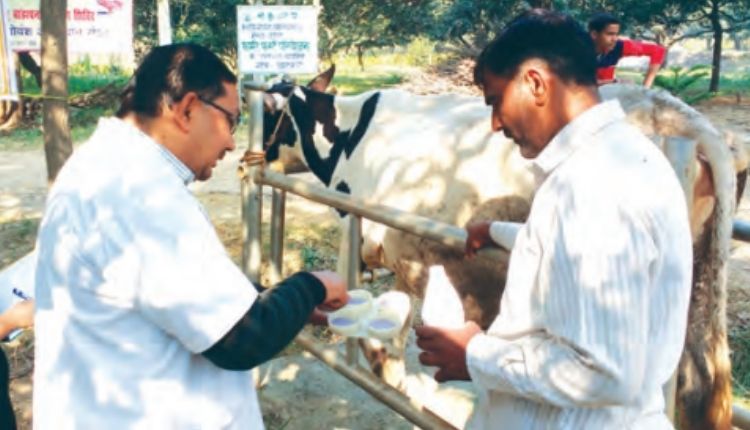
10 Precautions to Prevent Thaneella
- Do not ignore any injury to the udder. Treat it immediately as per the advice of a skilled veterinarian. Antibiotics should also be used only after consulting a doctor.
- The chronic disease of the toenail, in which the udder becomes hard, cannot be treated. Animals arriving in incurable condition have suffered from tonsillitis over and over again. The risk of infecting other animals with them is very high, so these animals should be removed from the shed and infected udders should be dried permanently by applying a chemical solution on the advice of a doctor. For this, 30-60 ml 3% silver nitrate solution or 30 ml 5% copper sulphate solution is offered in the udder.
- The animals and their enclosure should be kept clean. Do not be careless in removing dung and mud from the enclosure and do not allow water to accumulate there. Keep the floor of the enclosure half unpaved and half paved. Use straw or gravel on paved floors.
- Before and after milking, clean the udders with antiseptic medicine solution and wipe dry with a clean cloth after cleaning. After that wash hands thoroughly with soap. After milking, every four udders should be immersed in a solution prepared by mixing antiseptic betadine-80 ml and glycerin 20 ml in one liter of water. It is also helpful for protection from germs as well as heals wounds and injuries of the udder.
- If milk is fermented with a machine, then the machine should also be cleaned and maintained properly. The cup of the machine should be cleaned with lukewarm water after milking and the machine should be cleaned with antiseptic medicine once in a week.
- Milk of healthy animals should be milked first and then milk of animals with tonsillar disease should be removed.
- Inculcate the habit of standing for 1-2 hours after milking in milch animals. For this, after milking, add a little grain to the animal, so that it is busy in eating and does not sit.
- Stop milking pregnant animals 2 months before delivery and inject antibiotic tubes into all four udders for dry therapy. Due to this, old toenail disease is cured and new germs do not get infected.
- Include vitamins and salts like copper, zinc and selenium in the diet of milch animals. These nutrients increase their immunity against Tonalla. For this, give the animal a continuous mix of mineral mixture in the grain.
- To diagnose sub-clinical tonsillar, keep testing of high yielding animals at regular intervals. Even before buying a milch animal, their milk should be checked by the bottle.
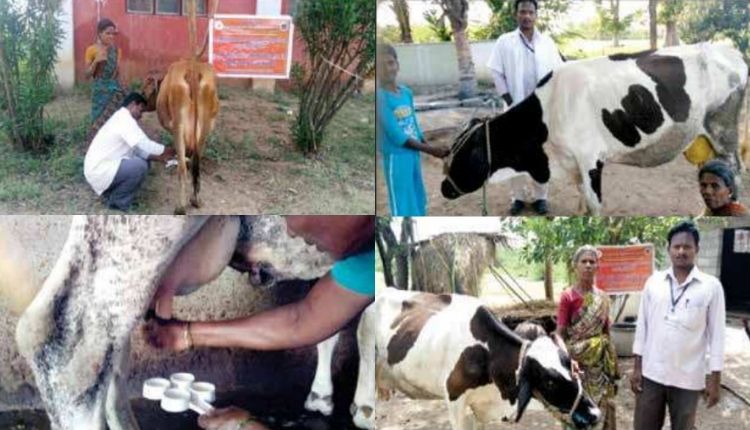
Contact us: If farmers want to share information or experiences related to farming with us, then they can do this by calling us on the phone number 9599273766 or by writing an email to [email protected] or by sending your recording. Through Kisan of India, we will convey your message to the people, because we believe that if the farmers are advanced then the country is happy.



